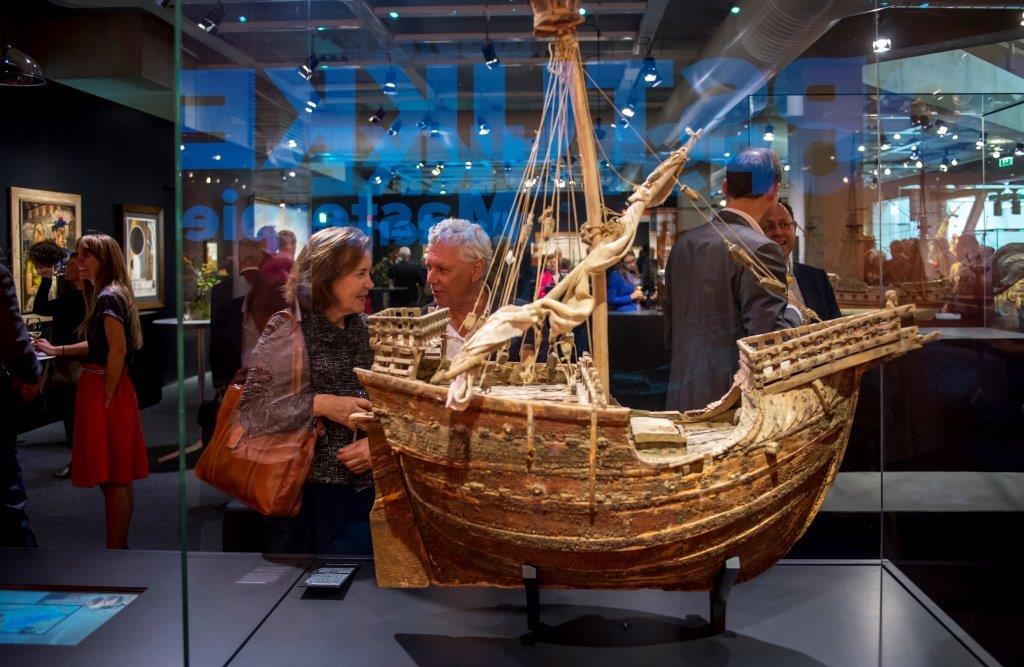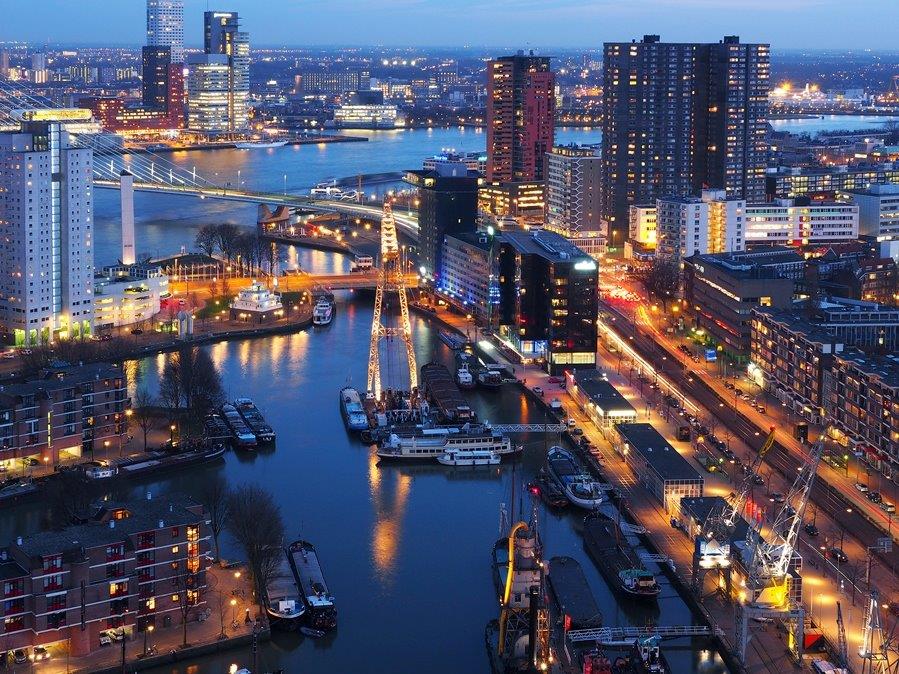Maritiem Museum Rotterdam on:
[Wikipedia]
[Google]
[Amazon]
The Maritime Museum Rotterdam is a
 'Masterpieces’ by the Maritime Museum is showcasing twenty-five unique objects from its centuries-old collection. Each object has earned its place in the exhibition in its own way – because of its revolutionary role in shipping, because it is a silent witness to a key moment in maritime history, or because it is such a high-quality piece. The most important piece is the Mataró model, which means much the same to the Maritime Museum as
'Masterpieces’ by the Maritime Museum is showcasing twenty-five unique objects from its centuries-old collection. Each object has earned its place in the exhibition in its own way – because of its revolutionary role in shipping, because it is a silent witness to a key moment in maritime history, or because it is such a high-quality piece. The most important piece is the Mataró model, which means much the same to the Maritime Museum as
 A former attraction was the 19th-century
A former attraction was the 19th-century

Maritime Museum Rotterdam
Stichting Museumschip de Buffel
{{Authority control Maritime museums in the Netherlands Museums in Rotterdam Museums established in 1874 Buildings and structures in Rotterdam Port of Rotterdam
maritime museum
A maritime museum (sometimes nautical museum) is a museum specializing in the display of objects relating to ships and travel on large bodies of water. A subcategory of maritime museums are naval museums, which focus on navies and the militar ...
in Rotterdam
Rotterdam ( , , , lit. ''The Dam on the River Rotte'') is the second largest city and municipality in the Netherlands. It is in the province of South Holland, part of the North Sea mouth of the Rhine–Meuse–Scheldt delta, via the ''"N ...
, The Netherlands
)
, anthem = ( en, "William of Nassau")
, image_map =
, map_caption =
, subdivision_type = Sovereign state
, subdivision_name = Kingdom of the Netherlands
, established_title = Before independence
, established_date = Spanish Netherl ...
. Dedicated to naval history
Naval warfare is combat in and on the sea, the ocean, or any other battlespace involving a major body of water such as a large lake or wide river. Mankind has fought battles on the sea for more than 3,000 years. Even in the interior of large lan ...
, it was founded in 1874 by Prince Henry of the Netherlands.
Next to the Maritime Museum lies the open-air Maritime Museum Harbour, which merged with the Maritime Museum in 2014. The Maritime Museum Harbour contains an exceptional collection of historic vessels and cranes which are maintained in working condition.
Collection
The Museum Collection contains 850.000 objects from six centuries of maritime history.Exhibitions
In the Maritime Museum you can visit a diverse range of permanent and changing exhibitions for three generations: children between 4 and 12, their parents and grandparents. The exhibitions show the maritime influence on our everyday life. Today the museum is working on an offshore exhibition which will be open at the end of 2016.Masterpieces (Topstukken)
 'Masterpieces’ by the Maritime Museum is showcasing twenty-five unique objects from its centuries-old collection. Each object has earned its place in the exhibition in its own way – because of its revolutionary role in shipping, because it is a silent witness to a key moment in maritime history, or because it is such a high-quality piece. The most important piece is the Mataró model, which means much the same to the Maritime Museum as
'Masterpieces’ by the Maritime Museum is showcasing twenty-five unique objects from its centuries-old collection. Each object has earned its place in the exhibition in its own way – because of its revolutionary role in shipping, because it is a silent witness to a key moment in maritime history, or because it is such a high-quality piece. The most important piece is the Mataró model, which means much the same to the Maritime Museum as Rembrandt
Rembrandt Harmenszoon van Rijn (, ; 15 July 1606 – 4 October 1669), usually simply known as Rembrandt, was a Dutch Golden Age painter, printmaker and draughtsman. An innovative and prolific master in three media, he is generally consid ...
’s Nightwatch does to the Rijksmuseum
The Rijksmuseum () is the national museum of the Netherlands dedicated to Dutch arts and history and is located in Amsterdam. The museum is located at the Museum Square in the borough of Amsterdam South, close to the Van Gogh Museum, the St ...
. It is the oldest model ship in Europe, dating back more than six centuries. And it has been made extremely accurately.
The other masterpieces in the exhibition are all of nearly the same calibre. The Itinerario by Jan Huygen van Linschoten
Jan Huygen van Linschoten (1563 – 8 February 1611) was a Dutch merchant, trader and historian.
He travelled extensively along the East Indies regions under Portuguese influence and served as the archbishop's secretary in Goa between 1583 ...
is one of the most important travel journals in the world, revealing all the secrets of the Portuguese - the WikiLeaks
WikiLeaks () is an international Nonprofit organization, non-profit organisation that published news leaks and classified media provided by anonymous Source (journalism), sources. Julian Assange, an Australian Internet activism, Internet acti ...
of the sixteenth century. Furthermore, it includes the pen-and-ink drawings of Willem van de Velde
Willem van de Velde the Elder (1610/11 – 13 December 1693) was a Dutch Golden Age seascape painter, who produced many precise drawings of ships and ink paintings of fleets, but later learned to use oil paints like his son.
Biography
Wi ...
and sea charts of the Corpus Christi collection by the master cartographer Joan Blaeu
Joan Blaeu (; 23 September 1596 – 21 December 1673) was a Dutch cartographer born in Alkmaar, the son of cartographer Willem Blaeu.
Life
In 1620, Blaeu became a doctor of law but he joined the work of his father. In 1635, they published ...
. This is a collection of East India Company charts that lay hidden in England for three hundred years and came to the Maritime Museum in 2006 after being purchased for millions.
Maritime Museum Harbour
 A former attraction was the 19th-century
A former attraction was the 19th-century ironclad
An ironclad is a steam engine, steam-propelled warship protected by Wrought iron, iron or steel iron armor, armor plates, constructed from 1859 to the early 1890s. The ironclad was developed as a result of the vulnerability of wooden warships ...
ram ship HNLMS Buffel
HNLMS ''Buffel'' is a 19th-century ironclad ram ship. She was one of the main attractions of the Maritime Museum Rotterdam, also known as the Prince Hendrik Museum, named after its founder, Prince Henry (Hendrik) "The Navigator", who had a nava ...
, which was moored outside of the museum. The ship was moved to Hellevoetsluis
Hellevoetsluis () is a small city and municipality in the western Netherlands. It is located in Voorne-Putten, South Holland. The municipality covers an area of of which is water and it includes the population centres Nieuw-Helvoet, Nieuwenhoorn ...
in 2013 (due to cost cuts) where it will be exploited by the Stichting
A ''stichting'' () is a Dutch legal entity with limited liability, but no members or share capital, that exists for a specific purpose. This form of entity makes it possible to separate functions of ownership and control. Its use has been pioneered ...
Museumschip de Buffel to preserve this ship for the generations to come.
The Maritime Museum Harbour includes the red cast iron
Cast iron is a class of iron–carbon alloys with a carbon content more than 2%. Its usefulness derives from its relatively low melting temperature. The alloy constituents affect its color when fractured: white cast iron has carbide impuriti ...
Low Light of the Hook of Holland, which formerly stood at the entrance to the Nieuwe Waterweg
The Nieuwe Waterweg ("New Waterway") is a ship canal in the Netherlands from het Scheur (a branch of the Rhine-Meuse-Scheldt delta) west of the town of Maassluis to the North Sea at Hook of Holland: the Maasmond, where the Nieuwe Waterweg conn ...
(New Waterway). Furthermore, it includes a wide range of steam tugs, a steam driven sheerleg
A floating sheerleg (also: shearleg) is a floating water vessel with a Crane (machine), crane built on shear legs. Unlike other types of crane vessel, it is not capable of rotating its crane independently of its hull.
There is a huge variety in ...
and a working grain elevator
A grain elevator is a facility designed to stockpile or store grain. In the grain trade, the term "grain elevator" also describes a tower containing a bucket elevator or a pneumatic conveyor, which scoops up grain from a lower level and deposits ...
. A diverse range of historical inland vessels is also exposed here. Visitors are able to enter most of the ships. In the summer the Museum organizes cruises through the city of Rotterdam with these ships.
Professor Splash (Professor Plons)
In this exhibition children between 4 and 12 years old learn about the maritime world by playing. As they play, they learn all sorts of things about various types of ships, working in the port, navigation and how products such as their own toys are transported by ship from all over the world to the Netherlands.
References
*External links
Maritime Museum Rotterdam
Stichting Museumschip de Buffel
{{Authority control Maritime museums in the Netherlands Museums in Rotterdam Museums established in 1874 Buildings and structures in Rotterdam Port of Rotterdam